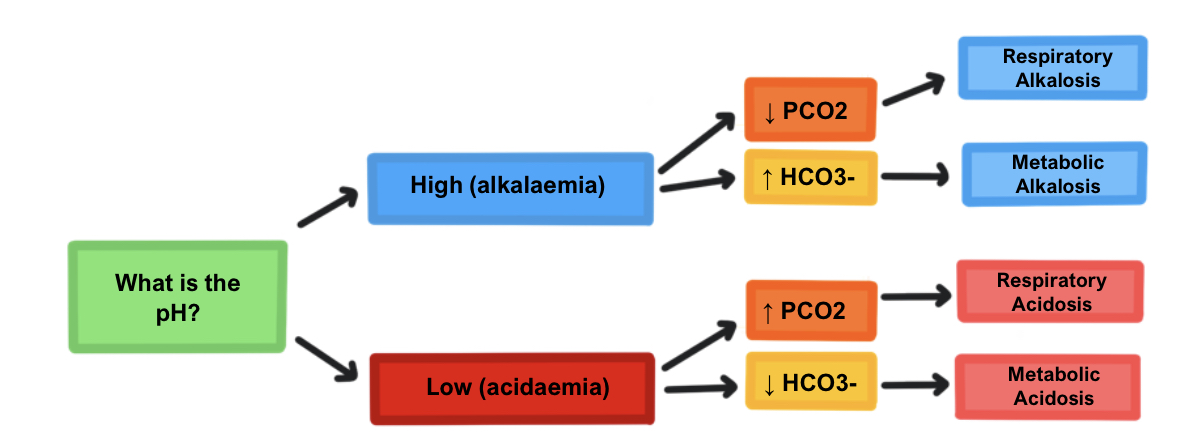How to Interpret an ABG
Arterial blood gas analysis (ABG)
This involves sampling blood from an artery to work out the arterial PO2 and PCO2, as well as the pH and HCO3–.
It is used in various situations e.g., hypoxia, exacerbations of respiratory conditions and cyanosis.
It is a more accurate measurement of arterial oxygen saturation than pulse oximetry.

Interpreting an ABG
1) Firstly, work out if the patient is acidotic or alkalotic.
Normal pH = 7.35–7.45
pH < 7.35 = Acidosis
pH > 7.45 = Alkalosis
2) Assess whether this can this be explained by the CO2.
If yes, then it is a respiratory problem.
e.g., if pH is low and PCO2 is high, this indicates a respiratory acidosis.
3) If not explained by CO2, assess whether the pH can be explained by the HCO3–
e.g., pH is low, normal PCO2 but low HCO3–, this indicates a metabolic acidosis.
4) Assess if there is a compensatory process occurring.
Are there changes in PCO2/HCO3- to correct an underlying imbalance?
5) Is this compensation partial (pH abnormal) or complete (pH normalised)?
Common Causes
Respiratory Acidosis:
Opiate overdose
Anaesthesia
COPD
Pneumonia
Respiratory Alkalosis:
Anxiety
PE
Pregnancy
CNS problems (stroke, encephalitis)
Aspirin overdose
Disclaimer




